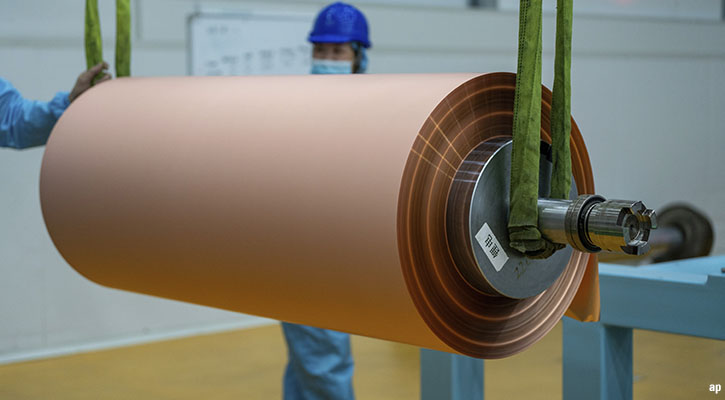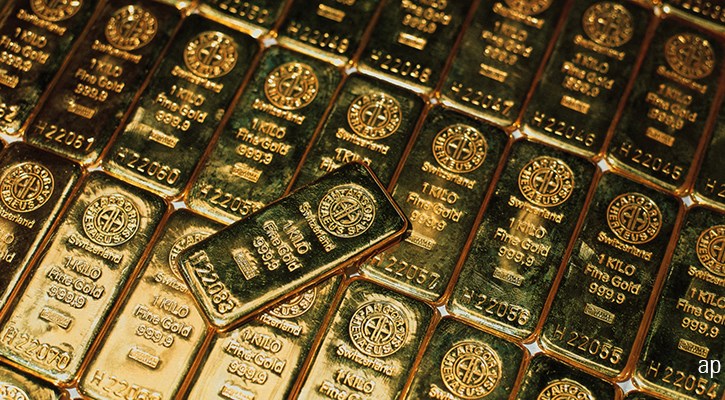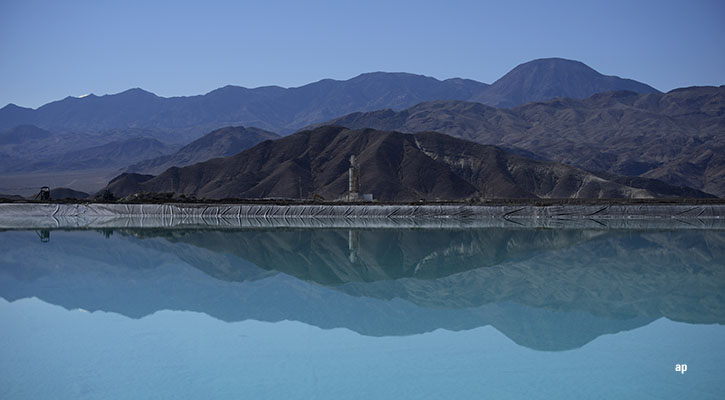
Copper is currently trading at around two-year highs, driven by the belief that the red metal's supply will struggle to keep pace with rising global demand, as well as a hedge against renewed inflation fears. The commodity’s role in the carbon transition and in the AI revolution are also key factors in expected higher demand.
And from the supply side, production cuts in mines are increasing: a recent example is the 6.5% reduction in quarterly production at Ivanhoe Mines in the Kamoa-Kakula complex in the Democratic Republic of Congo. Or the decision by the Chinese Smelter Purchasing Team (CSPT) to reduce production by 5-10% in the country's main smelters.
There are other political factors at work too.
"The banning on the LME and CME (Chicago Mercantile Exchange) of aluminium, nickel and copper deliveries from Russia has led traders to consider an increased supply risk," explains Maurizio Mazziero, financial analyst and commodity expert.
BHP's takeover bid on Anglo American for $39 billion, which has been seen as pitch for the company’s copper and iron ore assets, also suggests high demand for the commodity.
These are all factors that add volatility to the price of copper. But as Mazziero says, these make it difficult to forecast the price for 2024. But with copper trading around $9,890 per tonne on the London Metal Exchange (LME), Mazziero says that the price reaching a historical high of $11,000 is realistic.
"The copper market could be close to a deficit situation due to recent supply-side disruptions, and any indication of a recovery in demand would have a significant impact on an already rather tight situation," comments Roberta Caselli, commodities investment strategist at Global X.
And indeed, while global visible stocks remained 41% below the seasonal average of the past five years, copper consumption is rising, especially in China.
"Opportunities for significant new demand growth could also arise due to the massive boom in infrastructure spending in India. Government sources have reported that India will send two delegations to Chile next month to explore copper deposits, which it needs for its rapid economic growth and energy transition plans,” Caselli explains.
No Copper, No Green Economy
Global efforts towards decarbonisation are a structural growth engine for many raw materials or metals, and copper is one of the key metals for the energy transition.
For example, wind and solar are among the most popular forms of renewable energy today. The graph below shows the amount of copper required to generate energy from offshore wind (wind turbines in the sea), onshore wind (wind turbines on land) and solar photovoltaics compared to fossil fuels such as coal and natural gas.
"This signals how demand for copper (and also for other metals) has become less elastic with respect to the market cycle, as they are now supported by a secular trend," says Benjamin Louvet, head of commodities at Ofi Invest AM.
"Also supporting demand are elements that were not previously considered or that are linked to the emergence of new needs. One example of all is the development of the electricity grid, with many governments, especially European ones, only recently realising that not developing it could frustrate all the efforts made for the transition,” Louvet continues.
Copper is an excellent conductor of electricity, making it the ideal material for renewable energy systems. Its high electrical conductivity enables efficient energy transfer, minimising power losses during transmission and distribution.
Artificial Intelligence is Hungry For Copper Too
Finally, further supporting the structural growth of copper demand could be the demand from data centres for artificial intelligence, a key component of a rapid deployment of AI technologies.
"In the US alone, data centres consumed 17GW of energy; by the end of the decade, it is estimated that data centre energy requirements will double to 35GW," says Albert Chu, portfolio manager at Man Group.
"When considering this growth, it should be kept in mind that estimates of data centre expansion resulting from artificial intelligence penetration are at an early stage and likely underestimate the ultimate demand."
Although the implications are still at an early stage for global copper markets, the outlook suggests that there are strong secular drivers for demand.
"Let us assume that the US, where about half of the AI market is concentrated, will increase its development by an additional 5 GW each year. This alone would increase demand by 500,000 tonnes worldwide, which is equivalent to a 2% increase in global copper demand,” says Benjamin Louvet. Although it may seem insignificant, in an already tight market even a 1% shortage could plunge the market into a significant deficit.
With the world striving to achieve zero net emissions in the next three decades, then, Albert Chu predicts that "demand for copper will grow five to six times. However – he continues – this surge may be difficult to meet given current supply constraints.”
Investing in Copper ETCs
The easiest way to gain exposure to the spot price of a commodity is through an ETC (exchange-traded commodity). European investors can choose from less than a dozen ETCs focused exclusively on copper, as well as several other instruments offering exposure to a diversified basket of industrial metals. The list below excludes short instruments (which return an inverse result to the benchmark) or leveraged instruments (which amplify the results – often daily – of the replicated index) and those with less than €1 million in assets under management.
Methodology for Copper Investing
As can be seen from the returns shown in the table, these instruments are not equivalent. They often replicate different benchmarks, based on different methodologies, which results in a divergent risk-return ratio.
For example, the benchmarks of the RICI Enhanced family (created by Jim Rogers in the late 1990s) depart from the common practice of using the futures contract with the closest expiration date as the price source; this is to try to minimise the contango effect. A very important element in determining the value of synthetic ETCs is related to the rolling effect, which is simply the replacement of the expiring futures contract. Rolling is negative if the expiring contract has a lower price than the new one (so-called contango) and is positive in the opposite case (backwardation).
Therefore, the RICI Enhanced benchmarks invest in futures contracts with different maturities to smooth out the price differentials of the various futures contracts. For each individual commodity, a particular schedule is defined for the replacement of the benchmark futures contracts, which also takes seasonal cycles into account; finally, a liquidity filter eliminates under-traded futures contracts. This explains the generally higher fees charged by these strategies.







.jpg)




















